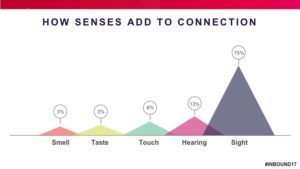Hugs or handshakes? That is the question.
Like most women, I have had to put up with too many men who felt it was ok to invade my personal space and put their hands on me or whisper unwelcome and uninvited sweet nothings in my ear.
So with the seemingly unending revelations about sexual harassers, I thought it would be a good idea to explore what happens when men and women greet each other in a professional setting.
There is a lot to say about this and I won’t get it all into this newsletter or video. I also don’t have much in the way of answers, but the times call for some deep thinking about what happens when men and women greet each other, what gets communicated, and whether that’s what we intended.
For simplicity’s sake — and to keep myself from going off the rails – I’m breaking it down into three distinct situations.
1. Greeting someone new
In this situation, professionals (in the US at least), will generally shake hands. Still, there is a right and wrong way to show professional respect via a handshake. Too often, a man takes a woman’s hand in what I call the “dainty,” which clasps only the fingers. This is instead of the full-fledged handshake men typically give each other. That’s the one where the webs between the thumb and forefinger meet, a level of firmness is exerted and one or two shakes happen as the partners make eye contact and say their pleasantries. This communicates mutual respect and a level of professionalism. By the way, sometimes women give each other the “dainty” and also to men. That communicates weakness that does not bode well for women who wish to be taken seriously. So my advice to men is, shake a woman’s hand the way you shake a man’s and to women, do not act daintily or you will be perceived as such and suffer for it.
2. Greeting someone you have affection for and are reuniting with after some time has passed
Men who feel affection toward other men almost always shake hands when re-uniting. They may do some backslapping and other upper body touching. But, in a similar situation with a woman, they almost always hug and kiss them. And women hug and kiss them back. Quite frequently women initiate it, including me. This, frankly, has always been ok with me, probably because it’s always been this way, but I have come to believe it is risky for women and the perceptions it engenders, even if unintentional or unconscious. This is one of those areas where I don’t have good answers. So, in a professional setting, I’d like to see this change to the way men greet each other. (I’m telling myself this as much as I’m telling you.) Now, if you’ve done something one way for a long time and suddenly change, it can create friction. I feel uncomfortable even thinking of how I’m going to do it going forward, but I’m going to try to keep professional greetings professional and I’ll be interested to know what your experiences are if you decide to make a change or if you never did it to begin with. It’s complicated.
3. Greeting someone you’ve met a few times and have no real affection (or disaffection) for
This is the most difficult one because it may result in some weirdness that, frankly, no one needs. It’s so much easier to acquiesce to a surprise or unwelcome hug and kiss. But doing so is also the riskiest for women because impressions count. When people greet each other, they’re sizing each other up. If a woman allows herself to be hugged and kissed, even though it’s a cheek kiss, and sometimes even while shaking hands, it sends a signal that perhaps she’s open to more gestures that would be more audacious and more unwelcome. Again, I’m telling myself this as much as opening a discussion with you. So, what to do? In such cases, I’ve found that putting my hand out first and stiffening my arm will often nip it in the bud. Witty conversation and high-quality small talk will mitigate any awkwardness. Sometimes, however, a man will pull that hand he is shaking and force other contact. Here is where I don’t have good answers. Recoiling in the moment may put the woman at further disadvantage professionally and, of course, it depends on who it is doing the pulling – a boss? A client? Two people you most certainly wouldn’t want to offend. So here is where I get stumped. Certain people will respond to a good, private chat, where you explain how this undermines your professional stature (bad for the company and bottom line). Others will be offended and seek to deep-six you. In which case, if you can, you may have to escalate.
Of course, then there is the guy who is a harasser, who gets his jollies by exerting physical power over women. I’m not addressing that here since I wanted to stick with people who are well-intentioned, yet may be clueless or struggling with what to do in this watershed moment, which is a far more common situation and one, that if we figure it out, could have wide-ranging positive consequences for the future workplace
Also, I want to be clear that all of this is based on the US business communication culture. International customs vary so what’s acceptable here is not elsewhere. Also, it could be generational. Generations differ in what they think of as acceptable, a very good thing. I’m a boomer, but I wonder if millennials and Gen Xers handle things the way my generation has.
My only goal is to see women valued for their professional expertise and not have it discounted by traditions meant to preserve the status quo. Hugs hurt women professionally and handshakes help.
I would love to hear your take on this, your experiences. Please add your thoughts to the comments section.


